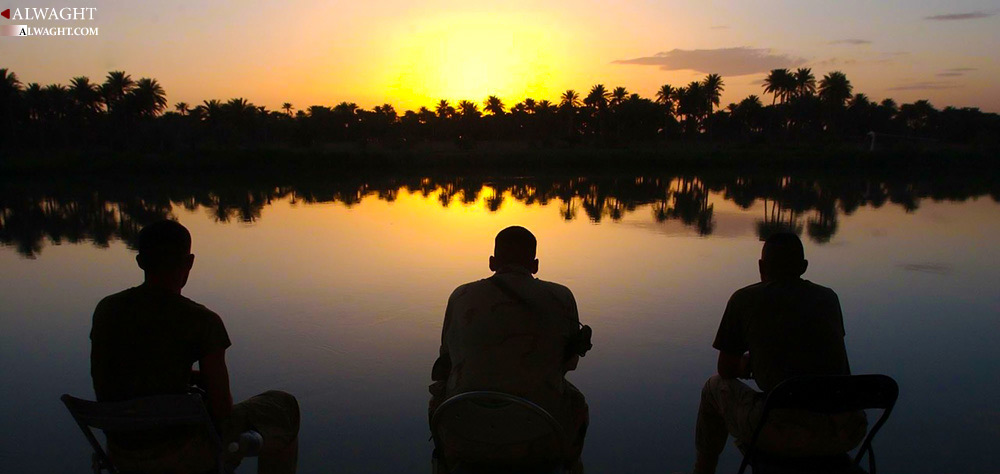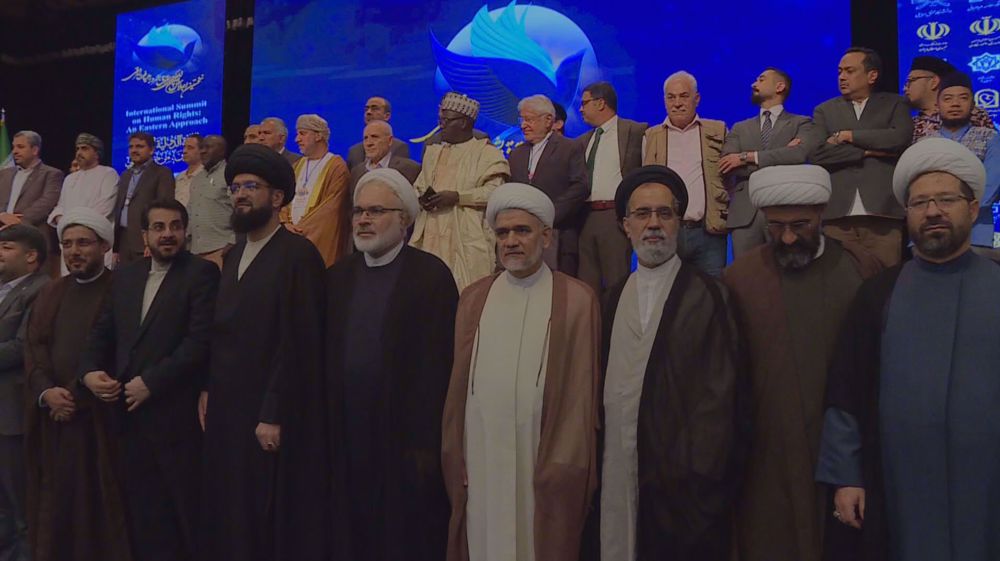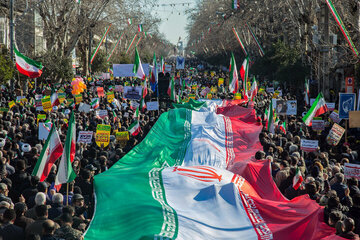Alwaght- The “post-ISIS Iraq” is a term used by the political analysts to draw a landscape of the future Iraq once the ISIS terrorist group is obliterated in this country. The issue that what kind of political order Iraq will adopt in post-terror time is surrounded by a set of scenarios each of them is likely to happen in the future.
Actually, Iraq after fall of the former Baathist regime of Saddam Hussein in 2003 stepped into a new political life, which is quite describable within a sectarian framework and categorization. In the new Iraq, it is almost impossible to imagine any political and even social outlooks for the society without a consideration of the three leading identities in the country: Shiite, Sunni, and Kurdish. An issue that has made many analysts well obsessed is the future of the Sunnis in the prospective Iraq.
When the focus is on the post-ISIS Iraq, the point must be taken into account that fully liberating the northern Iraqi city of Mosul from ISIS can present the central part of this focus. The operation to retake the ISIS-held city was launched on 17 October, 2016 with an order from Prime Minister Haider al-Abadi of Iraq, making considerable advances so far.
The question now is that how a future Iraq will be and to what direction it should head. Led by Masoud Barzani, the Kurds, now more determined than ever, struggle for their independence. On the other side, a series of accounts have surrounded the status of the Arab Sunnis in the war-hit country, ranging from seeking independence to eyeing a thorough convergence with the central government.
With a consideration of the above-drawn picture of today’s Iraq, there must be answers to the following questions: How will status of Sunni Arabs look like in the post-ISIS Iraq? What course will they take in the future?
As part of answers to these questions, three scenarios can be put forward. They can help draw a picture of the possible situation of Iraqi Sunnis after eradication of ISIS terrorists in the country.
The first scenario raised by some analysts is that the Sunni Arabs of Iraq will push for independence after Mosul liberation from the grasp of terrorists. The experts build this scenario on the argument that after announcement of Kurdistan region’s independence there will be no room for talking about a united Iraq. This, they argue, will stimulate the Sunnis in the country to strive after their own independent state, and so Iraq will see rise of the third state. This plan is strongly advocated by Saudi Arabia and the Israeli regime. But the analysts, at the same time, assert that this plan is very ambitious and premature because the realities of Iraq and the region suggest that neither the Kurds nor the Sunni Arabs see any ground prepared to declare independence.
The second scenario suggests that the Sunnis of the country will seek a Kurdistan-style federal government. Should this take place, Iraq will have three Sunni, Shiite, and Kurdish autonomous regions, allowing the “federal Iraq constitution” that was approved in 2003 to be more operational. Like the first one, this scenario has the backing– though relative– of Saudi Arabia, Turkey, the Kurdistan region’s leaders, and, to a large extent, the US. Although it has a slew of supporters among the Sunni Iraqi politicians, it requires some possibilities and suitable conditions for implementation which are not available at the current time. Geographical complications and legal restrictions ahead of foundation of a federal Sunni region can inflame big political conflicts between the different Iraqi factions, which makes it harder for the autonomous Sunni region to come to existence.
The third scenario about the future of Iraqi Sunni community is their unity with the Baghdad-based central government that will offer them a bigger share in the political power. To put it differently, the tendency to secure a Sunni partnership with the Shiites of the country is more likely than any other scenario. After 2003, the dominant political trends paved the way for some Sunni Iraqis to embark on radicalism. But in the new period, particularly after ISIS emergence in the country, the central government has shown a stronger will to see further Sunni engagement in the power structure and governance. On the other side, the Sunnis themselves, who experienced tough times during the rule of ISIS as an ostensibly pro-Sunni militant group in the country in the seized regions, began to buy the idea that working in convergence with the Shiites and the Baghdad government will guarantee them their security and their regions' stability. The best evidence for this claim is the warm welcome by residents of the ISIS-held Sunni regions like Fallujah, Ramadi, Tikrit, and Mosul when the country’s armed forces advanced to them to free them from the grasp of the terrorists.
The fact is that, at the time being, on the one hand the central government has decided that it needs to improve living conditions and infrastructures of the predominantly Sunni regions and get them on board in the power structure and on the other hand the Sunni leaders have concluded that cooperation with a strong central government will be in best interest of them. In general, a Sunni inclination for partnership with the central government is the likeliest scenario for the future Iraq.
How Iraqi Sunnis' Status Looks Like in Post-ISIS Time?
Alwaght- The “post-ISIS Iraq” is a term used by the political analysts to draw a landscape of the future Iraq once the ISIS terrorist group is obliterated in this country. The issue that what kind of political order Iraq will adopt in post-terror time is surrounded by a set of scenarios each of them is likely to happen in the future.
Actually, Iraq after fall of the former Baathist regime of Saddam Hussein in 2003 stepped into a new political life, which is quite describable within a sectarian framework and categorization. In the new Iraq, it is almost impossible to imagine any political and even social outlooks for the society without a consideration of the three leading identities in the country: Shiite, Sunni, and Kurdish. An issue that has made many analysts well obsessed is the future of the Sunnis in the prospective Iraq.
When the focus is on the post-ISIS Iraq, the point must be taken into account that fully liberating the northern Iraqi city of Mosul from ISIS can present the central part of this focus. The operation to retake the ISIS-held city was launched on 17 October, 2016 with an order from Prime Minister Haider al-Abadi of Iraq, making considerable advances so far.
The question now is that how a future Iraq will be and to what direction it should head. Led by Masoud Barzani, the Kurds, now more determined than ever, struggle for their independence. On the other side, a series of accounts have surrounded the status of the Arab Sunnis in the war-hit country, ranging from seeking independence to eyeing a thorough convergence with the central government.
With a consideration of the above-drawn picture of today’s Iraq, there must be answers to the following questions: How will status of Sunni Arabs look like in the post-ISIS Iraq? What course will they take in the future?
As part of answers to these questions, three scenarios can be put forward. They can help draw a picture of the possible situation of Iraqi Sunnis after eradication of ISIS terrorists in the country.
The first scenario raised by some analysts is that the Sunni Arabs of Iraq will push for independence after Mosul liberation from the grasp of terrorists. The experts build this scenario on the argument that after announcement of Kurdistan region’s independence there will be no room for talking about a united Iraq. This, they argue, will stimulate the Sunnis in the country to strive after their own independent state, and so Iraq will see rise of the third state. This plan is strongly advocated by Saudi Arabia and the Israeli regime. But the analysts, at the same time, assert that this plan is very ambitious and premature because the realities of Iraq and the region suggest that neither the Kurds nor the Sunni Arabs see any ground prepared to declare independence.
The second scenario suggests that the Sunnis of the country will seek a Kurdistan-style federal government. Should this take place, Iraq will have three Sunni, Shiite, and Kurdish autonomous regions, allowing the “federal Iraq constitution” that was approved in 2003 to be more operational. Like the first one, this scenario has the backing– though relative– of Saudi Arabia, Turkey, the Kurdistan region’s leaders, and, to a large extent, the US. Although it has a slew of supporters among the Sunni Iraqi politicians, it requires some possibilities and suitable conditions for implementation which are not available at the current time. Geographical complications and legal restrictions ahead of foundation of a federal Sunni region can inflame big political conflicts between the different Iraqi factions, which makes it harder for the autonomous Sunni region to come to existence.
The third scenario about the future of Iraqi Sunni community is their unity with the Baghdad-based central government that will offer them a bigger share in the political power. To put it differently, the tendency to secure a Sunni partnership with the Shiites of the country is more likely than any other scenario. After 2003, the dominant political trends paved the way for some Sunni Iraqis to embark on radicalism. But in the new period, particularly after ISIS emergence in the country, the central government has shown a stronger will to see further Sunni engagement in the power structure and governance. On the other side, the Sunnis themselves, who experienced tough times during the rule of ISIS as an ostensibly pro-Sunni militant group in the country in the seized regions, began to buy the idea that working in convergence with the Shiites and the Baghdad government will guarantee them their security and their regions' stability. The best evidence for this claim is the warm welcome by residents of the ISIS-held Sunni regions like Fallujah, Ramadi, Tikrit, and Mosul when the country’s armed forces advanced to them to free them from the grasp of the terrorists.
The fact is that, at the time being, on the one hand the central government has decided that it needs to improve living conditions and infrastructures of the predominantly Sunni regions and get them on board in the power structure and on the other hand the Sunni leaders have concluded that cooperation with a strong central government will be in best interest of them. In general, a Sunni inclination for partnership with the central government is the likeliest scenario for the future Iraq.



























